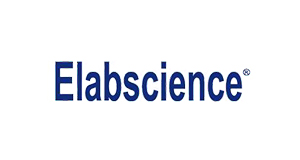Recombinant Rat GCK protein (His tag)
Recombinant Rat GCK protein (His tag)
Artikelnummer
ELSPDER100032-20
Verpackungseinheit
20 µg
Hersteller
Elabscience Biotechnology
Verfügbarkeit:
wird geladen...
Preis wird geladen...
Abbreviation: GCK
Target Synonym: GCK;Glucokinase;Hexokinase-4;Hexokinase 4
Target Species: Rat
Expression Host: E.coli
Fusion Tag: N-His
UNIProt ID: P17712
Background: Hexokinases phosphorylate hexose to form hexose 6?phosphate, the first step for hexose metabolism. There are four mammalian hexokinases (I, II, III and IV) and hexokinase IV is commonly known as glucose kinase (GCK). Unlike hexokinase I, II and III, which have high affinity for glucose and are strongly inhibited by the product, glucose?6?phosphate, GCK has much lower affinity for glucose and is not inhibited by the product. Consequently, GCK has a Km for glucose of approximately 7 mM, which is 100 times higher than that of hexokinase I, II, and III. This unique enzymatic property of GCK allows it to respond to blood glucose levels and contribute to the maintenance of blood glucose levels within the normal physiological range of 4 mM to 6 mM. In the pancreatic islets, GCK serves as a glucose sensor to control insulin release in the beta cells, and to control glucagon release in the alpha cells. In hepatocytes, GCK responds to changes of ambient glucose levels by increasing or reducing glycogen synthesis. Mutations in GCK have been associated with non?insulin?dependent diabetes mellitus, maturity?onset diabetes of the young type 2, and hyperinsulinemia of infancy. The enzyme activity was measured using a phosphatase coupled kinase assay.
Sequence: Met 1-Gly 147
Purity: > 95 % as determined by reducing SDS-PAGE.
Formulation: Lyophilized from sterile PBS, pH 7.4.
Normally 5 % - 8 % trehalose, mannitol and 0.01% Tween80 are added as protectants before lyophilization.
Please refer to the specific buffer information in the printed manual.
Endotoxin: Please contact us for more information.
Target Synonym: GCK;Glucokinase;Hexokinase-4;Hexokinase 4
Target Species: Rat
Expression Host: E.coli
Fusion Tag: N-His
UNIProt ID: P17712
Background: Hexokinases phosphorylate hexose to form hexose 6?phosphate, the first step for hexose metabolism. There are four mammalian hexokinases (I, II, III and IV) and hexokinase IV is commonly known as glucose kinase (GCK). Unlike hexokinase I, II and III, which have high affinity for glucose and are strongly inhibited by the product, glucose?6?phosphate, GCK has much lower affinity for glucose and is not inhibited by the product. Consequently, GCK has a Km for glucose of approximately 7 mM, which is 100 times higher than that of hexokinase I, II, and III. This unique enzymatic property of GCK allows it to respond to blood glucose levels and contribute to the maintenance of blood glucose levels within the normal physiological range of 4 mM to 6 mM. In the pancreatic islets, GCK serves as a glucose sensor to control insulin release in the beta cells, and to control glucagon release in the alpha cells. In hepatocytes, GCK responds to changes of ambient glucose levels by increasing or reducing glycogen synthesis. Mutations in GCK have been associated with non?insulin?dependent diabetes mellitus, maturity?onset diabetes of the young type 2, and hyperinsulinemia of infancy. The enzyme activity was measured using a phosphatase coupled kinase assay.
Sequence: Met 1-Gly 147
Purity: > 95 % as determined by reducing SDS-PAGE.
Formulation: Lyophilized from sterile PBS, pH 7.4.
Normally 5 % - 8 % trehalose, mannitol and 0.01% Tween80 are added as protectants before lyophilization.
Please refer to the specific buffer information in the printed manual.
Endotoxin: Please contact us for more information.

 English
English










